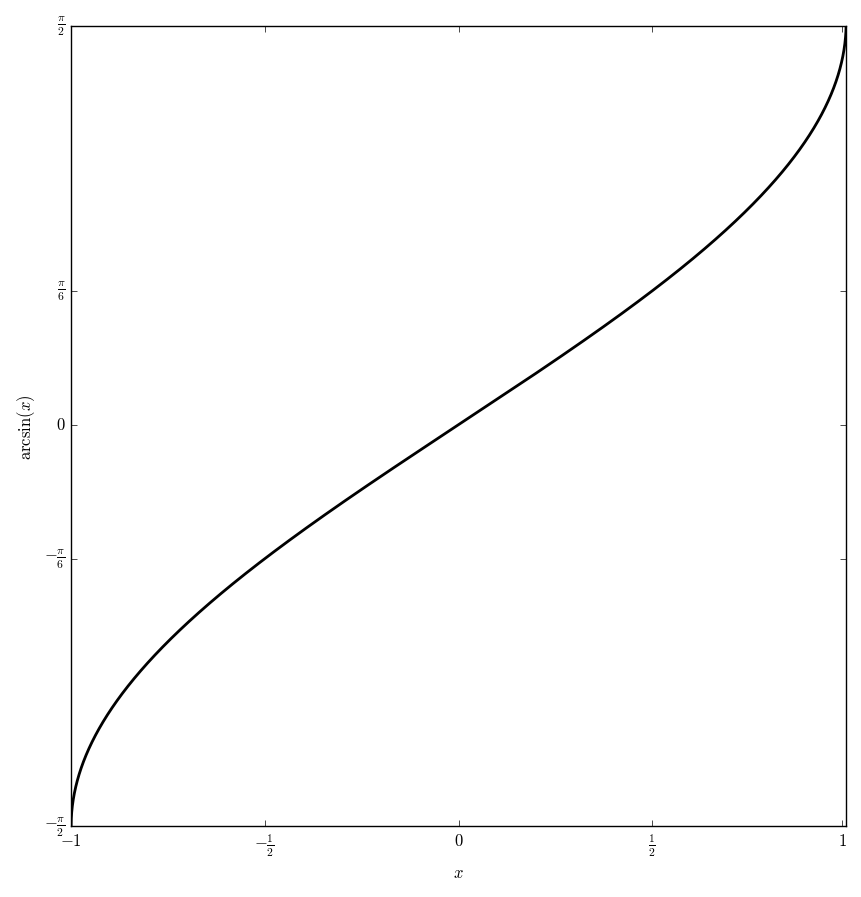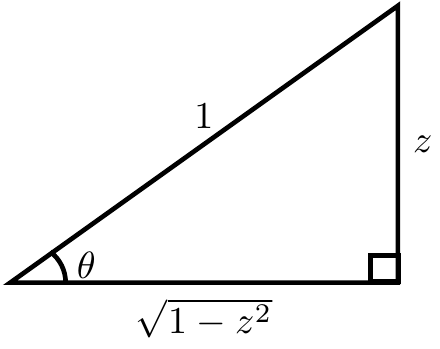Difference between revisions of "Arcsin"
| Line 3: | Line 3: | ||
<div align="center"> | <div align="center"> | ||
<gallery> | <gallery> | ||
| − | File: | + | File:Arcsinplot.png|Graph of $\mathrm{arcsin}$ on $[-1,1]$. |
File:Complex arcsin.jpg|[[Domain coloring]] of [[analytic continuation]] $\mathrm{arcsin}$. | File:Complex arcsin.jpg|[[Domain coloring]] of [[analytic continuation]] $\mathrm{arcsin}$. | ||
</gallery> | </gallery> | ||
Revision as of 21:14, 15 May 2016
The function $\mathrm{arcsin} \colon [-1,1] \rightarrow \left[ -\frac{\pi}{2}, \frac{\pi}{2} \right]$ is the inverse function of the sine function.
- Complex arcsin.jpg
Domain coloring of analytic continuation $\mathrm{arcsin}$.
Contents
Properties
Proposition: $\dfrac{d}{dz} \mathrm{arcsin(z)} = \dfrac{1}{\sqrt{1-z^2}}$
Proof: If $\theta=\mathrm{arcsin}(z)$ then $\sin(\theta)=z$. Now use implicit differentiation with respect to $z$ to get $$\cos(\theta)\theta'=1.$$ The following image shows that $\cos(\mathrm{arcsin}(z))=\sqrt{1-z^2}$:
Hence substituting back in $\theta=\mathrm{arccos}(z)$ yields the formula $$\dfrac{d}{dz} \mathrm{arcsin(z)} = \dfrac{1}{\cos(\mathrm{arcsin(z)})} = \dfrac{1}{\sqrt{1-z^2}}. █$$
Proposition: $\displaystyle\int \mathrm{arcsin}(z) dz = \sqrt{1-z^2}+z\mathrm{arcsin}(z)+C$
Proof: █
Proposition: $\mathrm{arcsin}(z) = \mathrm{arccsc}\left( \dfrac{1}{z} \right)$
Proof: █
Proposition: $\mathrm{arcsin}(z)=\displaystyle\sum_{k=0}^{\infty} \dfrac{\left(\frac{1}{2} \right)_n}{(2n+1)n!}x^{2n+1}$
Proof: █
Relationship between arcsin and hypergeometric 2F1
Videos
Inverse Trig Functions: Arcsin
Integrate x*arcsin(x)
What is arcsin(x)?
What is the inverse of arcsin(ln(x))?

